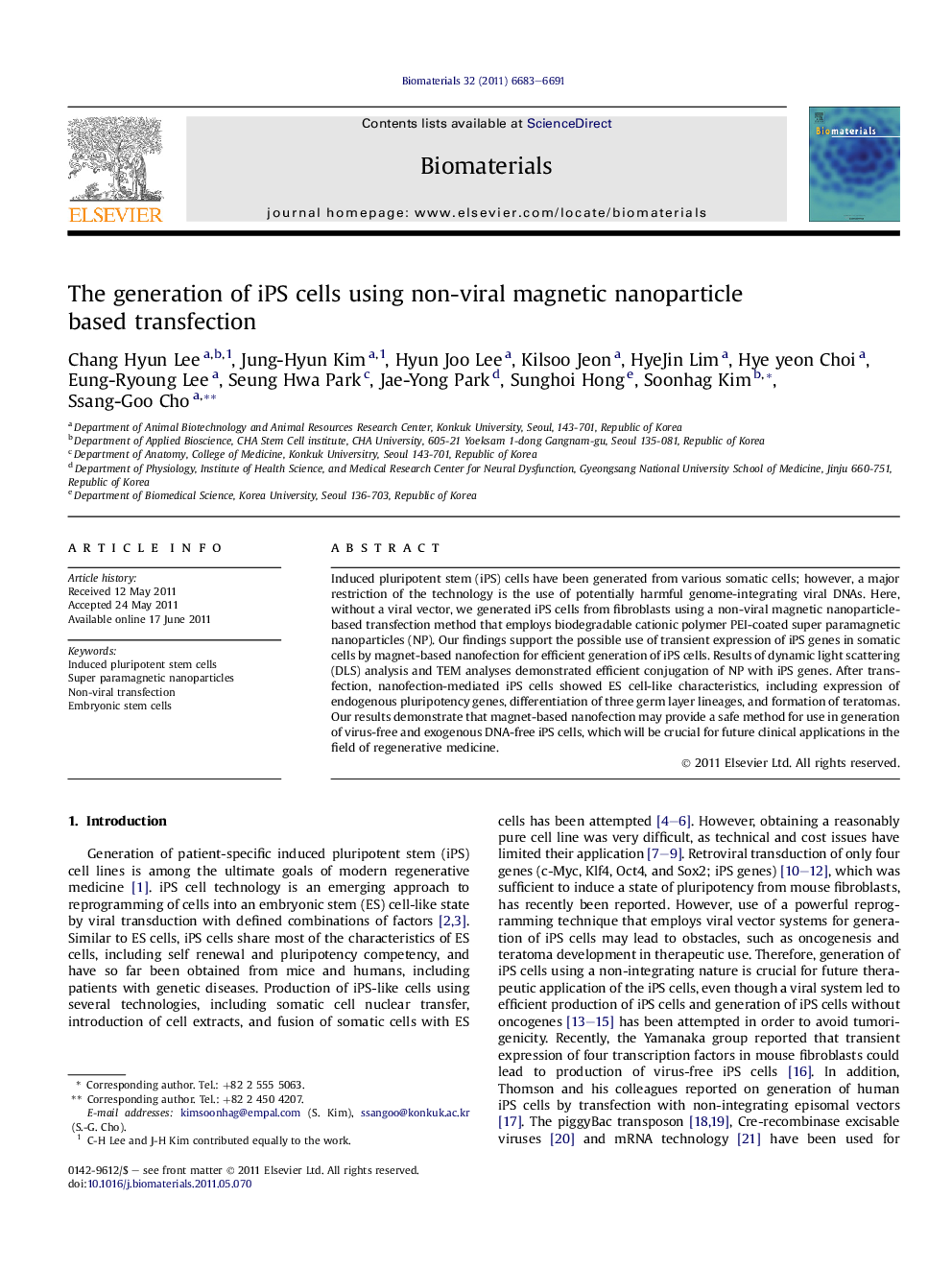| Article ID | Journal | Published Year | Pages | File Type |
|---|---|---|---|---|
| 7787 | Biomaterials | 2011 | 9 Pages |
Induced pluripotent stem (iPS) cells have been generated from various somatic cells; however, a major restriction of the technology is the use of potentially harmful genome-integrating viral DNAs. Here, without a viral vector, we generated iPS cells from fibroblasts using a non-viral magnetic nanoparticle-based transfection method that employs biodegradable cationic polymer PEI-coated super paramagnetic nanoparticles (NP). Our findings support the possible use of transient expression of iPS genes in somatic cells by magnet-based nanofection for efficient generation of iPS cells. Results of dynamic light scattering (DLS) analysis and TEM analyses demonstrated efficient conjugation of NP with iPS genes. After transfection, nanofection-mediated iPS cells showed ES cell-like characteristics, including expression of endogenous pluripotency genes, differentiation of three germ layer lineages, and formation of teratomas. Our results demonstrate that magnet-based nanofection may provide a safe method for use in generation of virus-free and exogenous DNA-free iPS cells, which will be crucial for future clinical applications in the field of regenerative medicine.
► We conduct a non-viral magnetic nanoparticle-based transfection to induce iPS from MEF. ► The magnetic nanoparticles are conjugated with 4 different iPS genes. ► The magnetic nanoparticle-based transfection of iPS genes provides safe and efficient generation of iPS.
